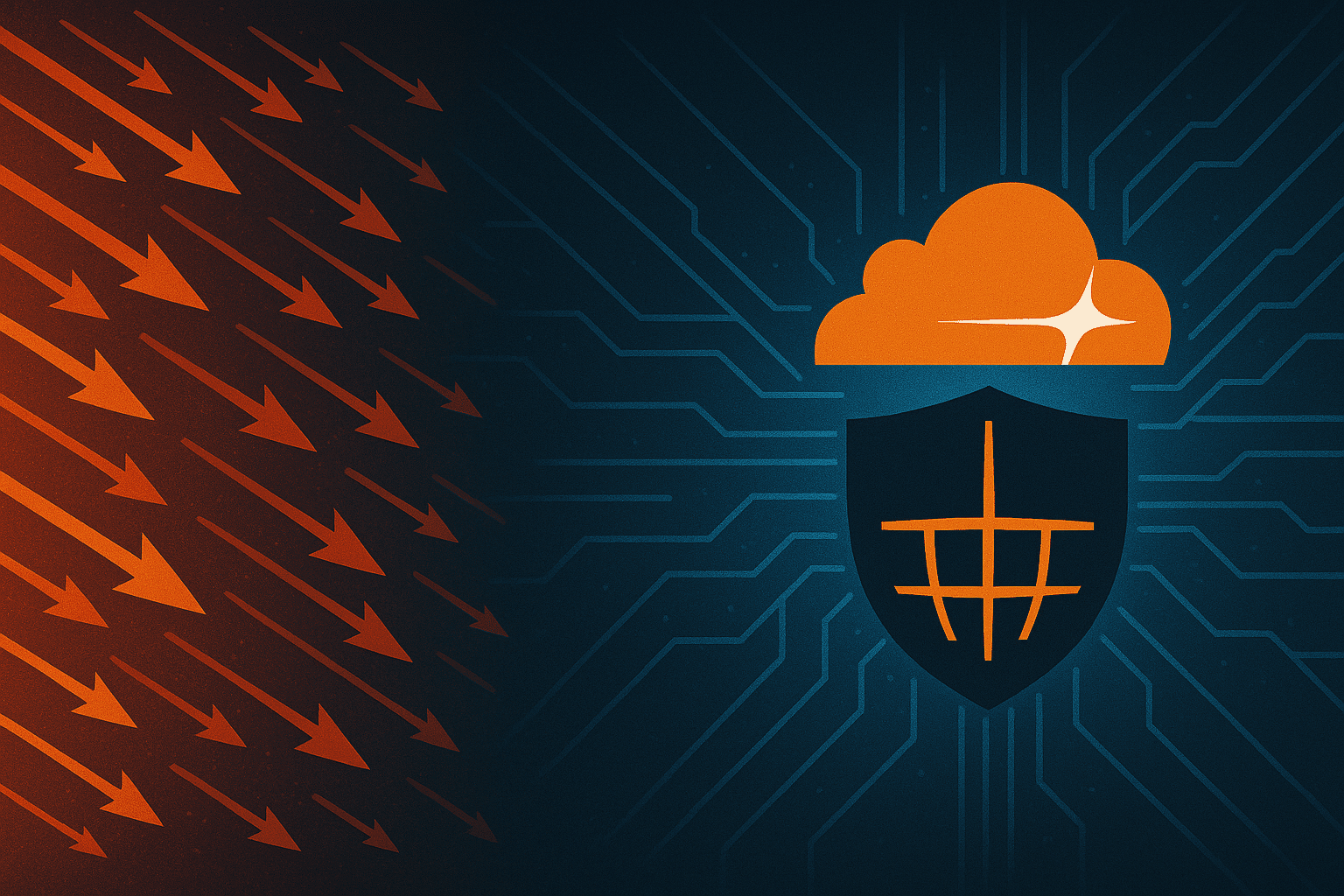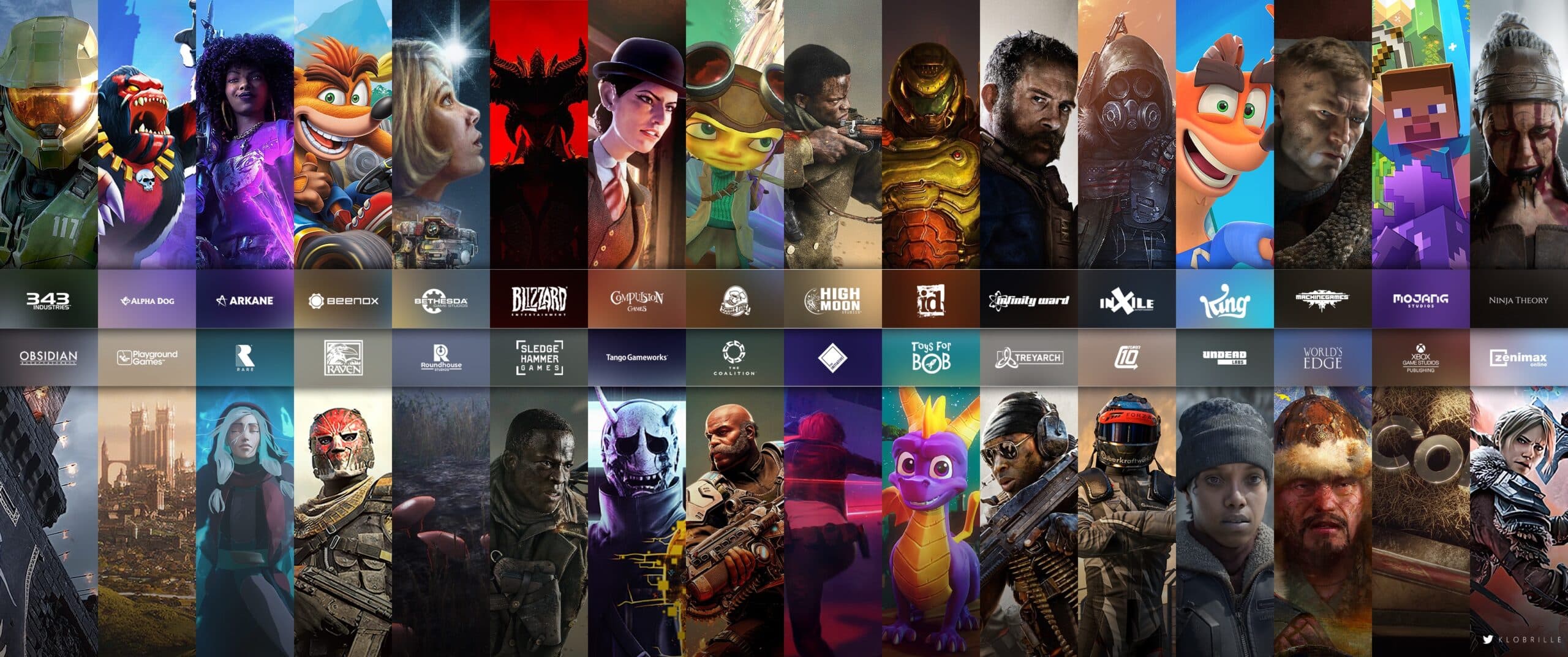Internet has just escaped one of the most monstrous tentacles of cybercrime ever recorded. In May 2025, Cloudflare stopped a DDoS attack of unprecedented scale: 7.3 terabits per second. A new world record that leaves one dizzy.
When the Internet Becomes a Battlefield
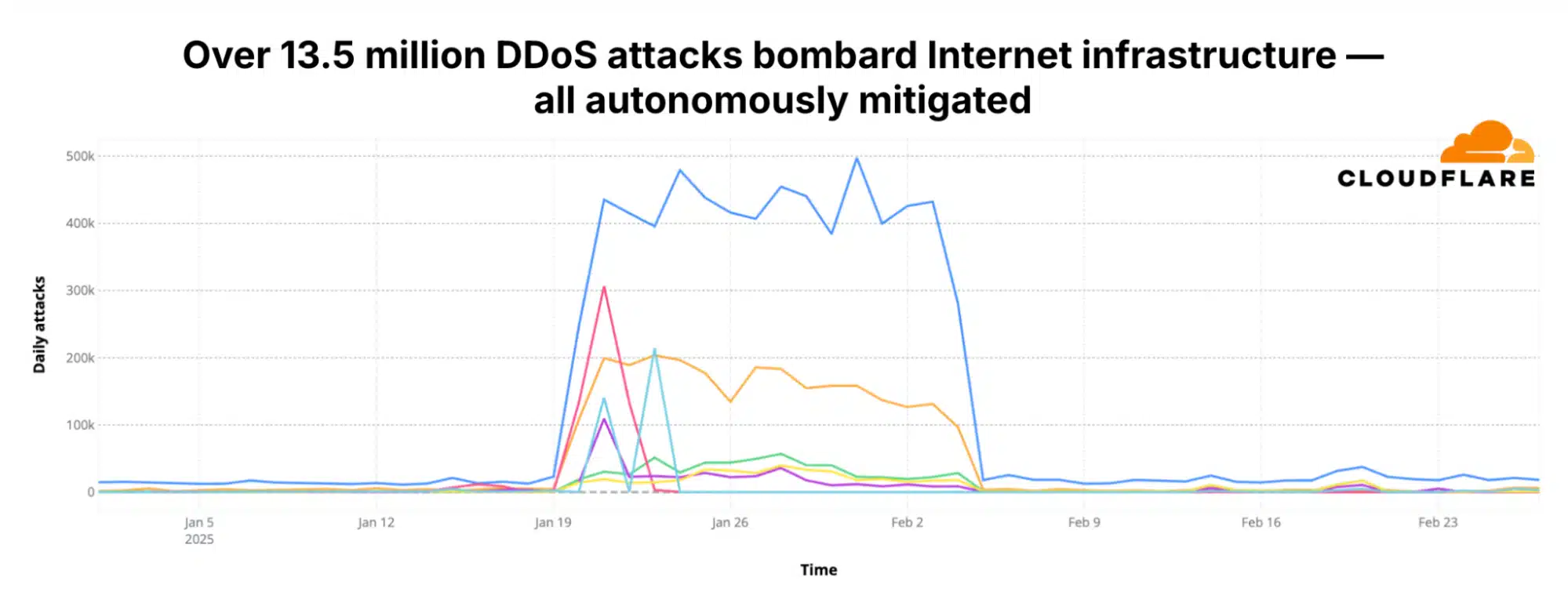
Imagine for a moment: 37.4 terabytes of malicious data dumped in just 45 seconds. To put that into perspective, it’s like someone trying to send you simultaneously more than 9,350 HD movies, or the equivalent of 57 years of compressed music in under a minute. A digital onslaught that could have paralyzed a large portion of the web.
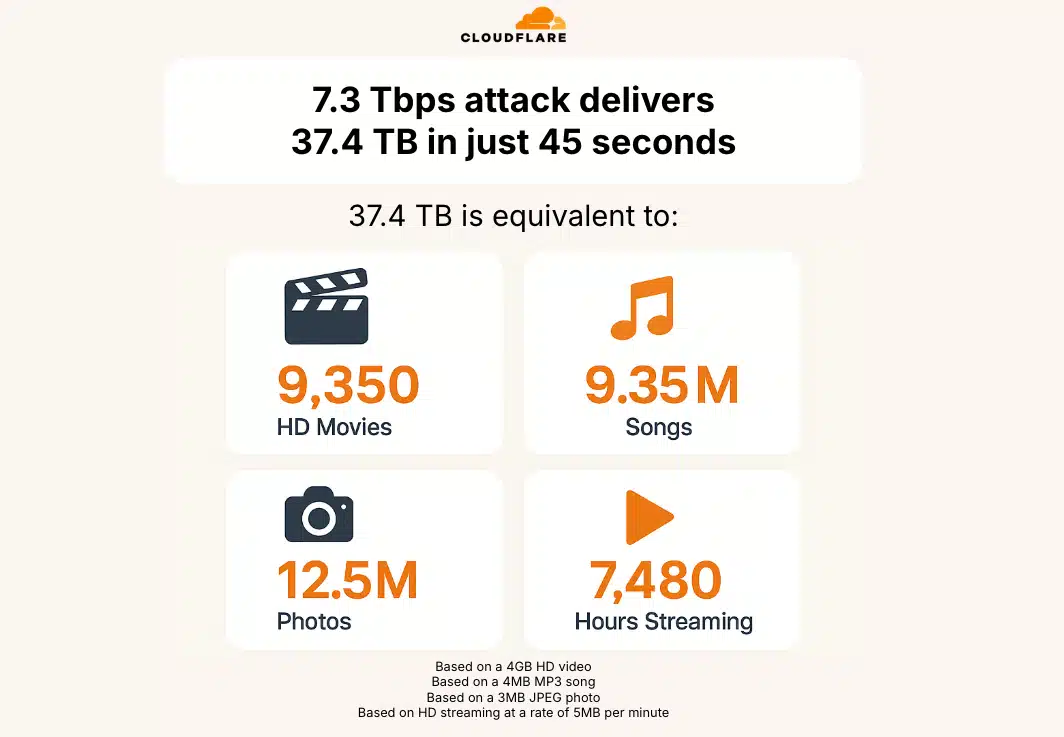
The victim? A web host protected by Cloudflare’s Magic Transit service. The attackers were evidently targeting critical Internet infrastructure, a worrying trend confirmed by cybersecurity experts.
Anatomy of a Modern Attack
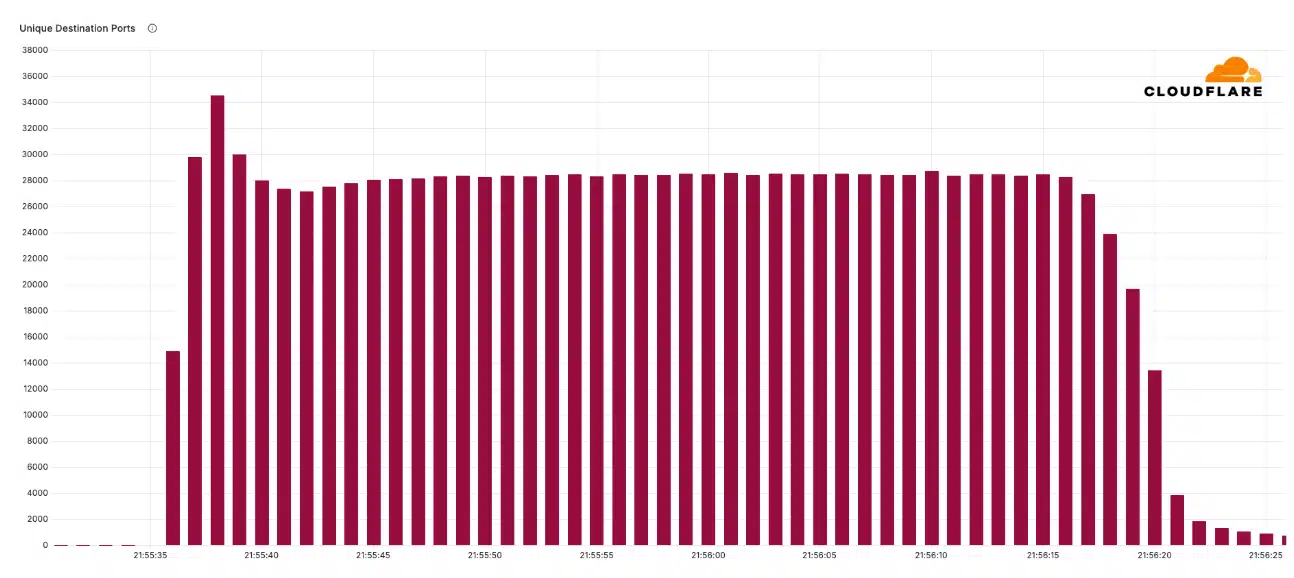
This record offensive was not the work of a script kiddie armed with a simple LOIC. The cybercriminals orchestrated a sophisticated multivector attack, mobilizing a varied arsenal:
- 99.996% UDP flood : the classic but devastatingly effective technique
- Reflection attacks : exploiting the QOTD, Echo, and NTP protocols
- Mirai botnet : these infamous zombified connected devices
- RIPv1 amplification : hijacking old routing protocols
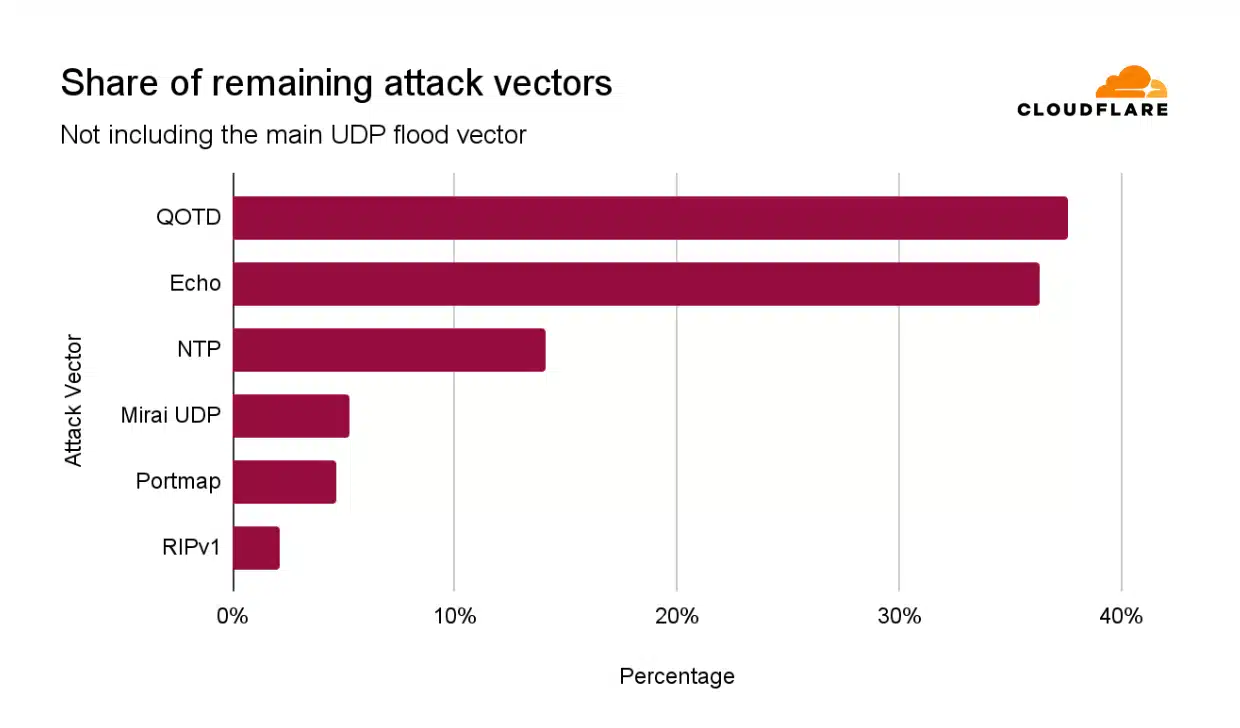
The numbers are dizzying: more than 122,000 IP addresses spread across 161 countries took part in this destructive symphony. Brazil and Vietnam led the way, each accounting for about a quarter of the malicious traffic.
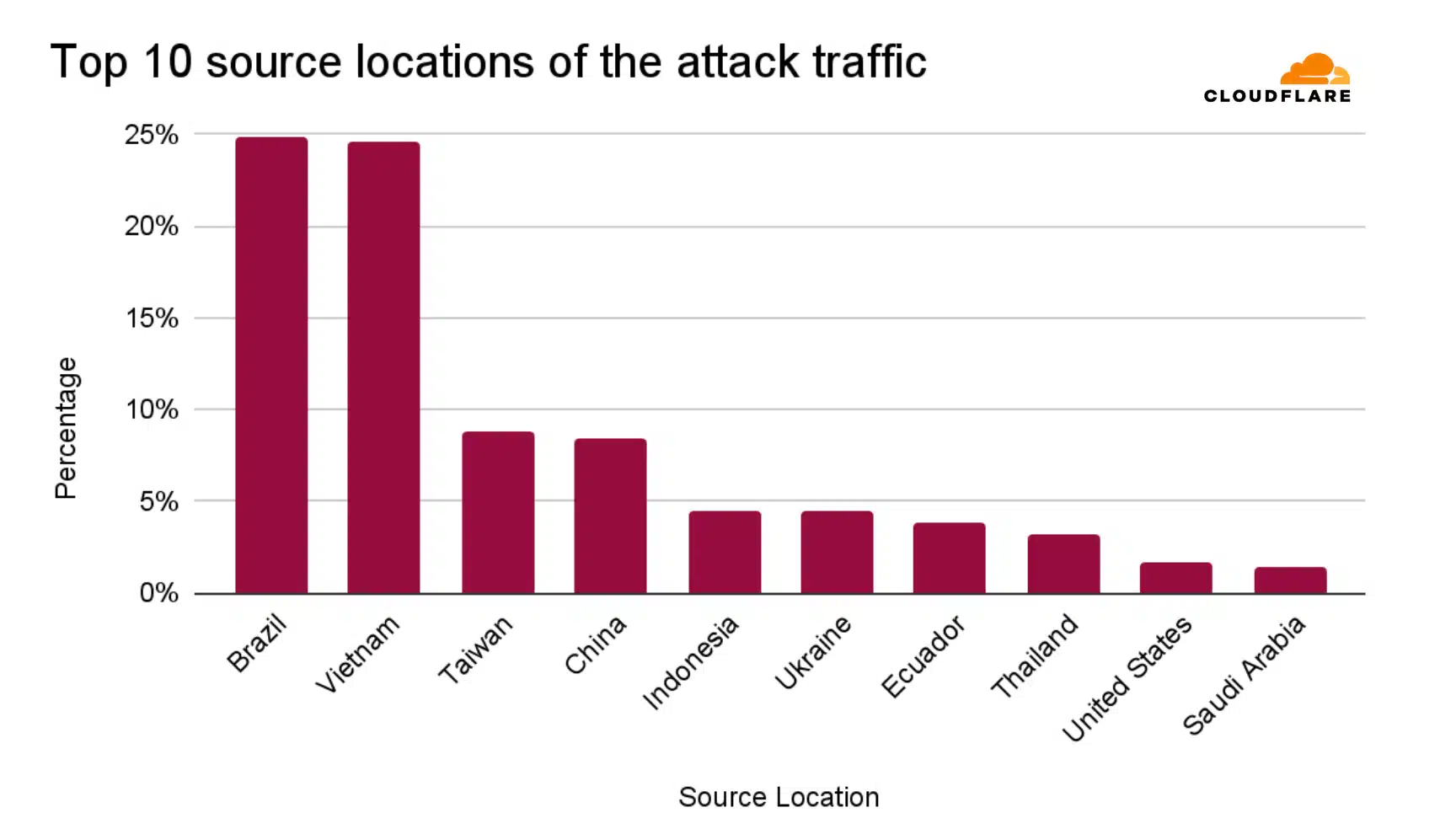
Artificial Intelligence to the Rescue of the Web
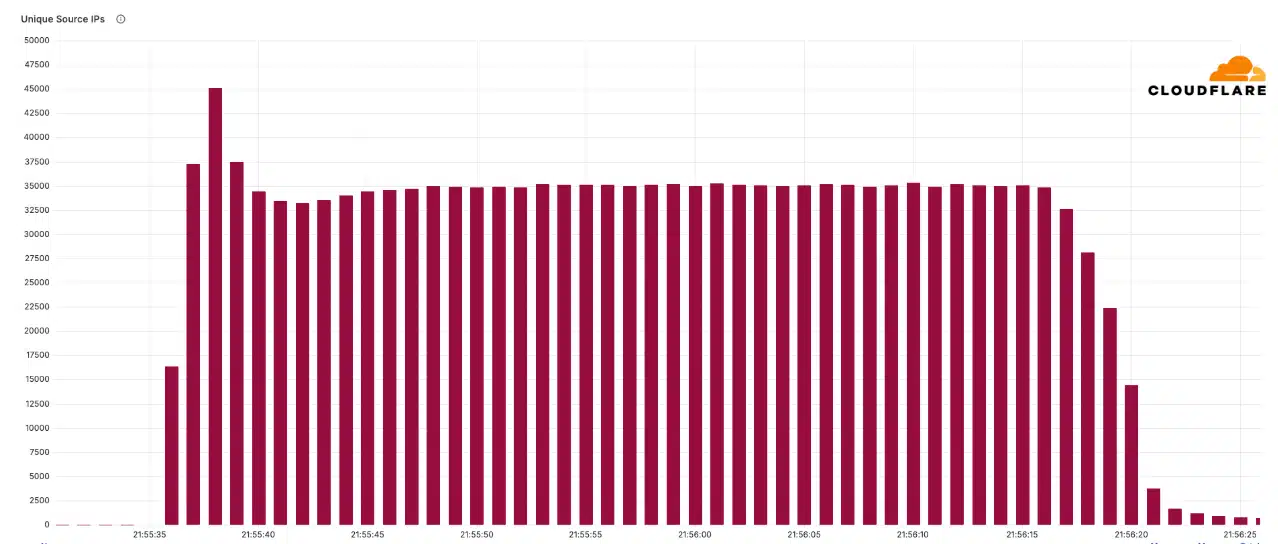
In the face of this digital avalanche, human intervention was unthinkable. That is where Cloudflare’s technology reveals its full power. Their system called the “dosd” (denial of service daemon) acted as an ultra-responsive guardian:
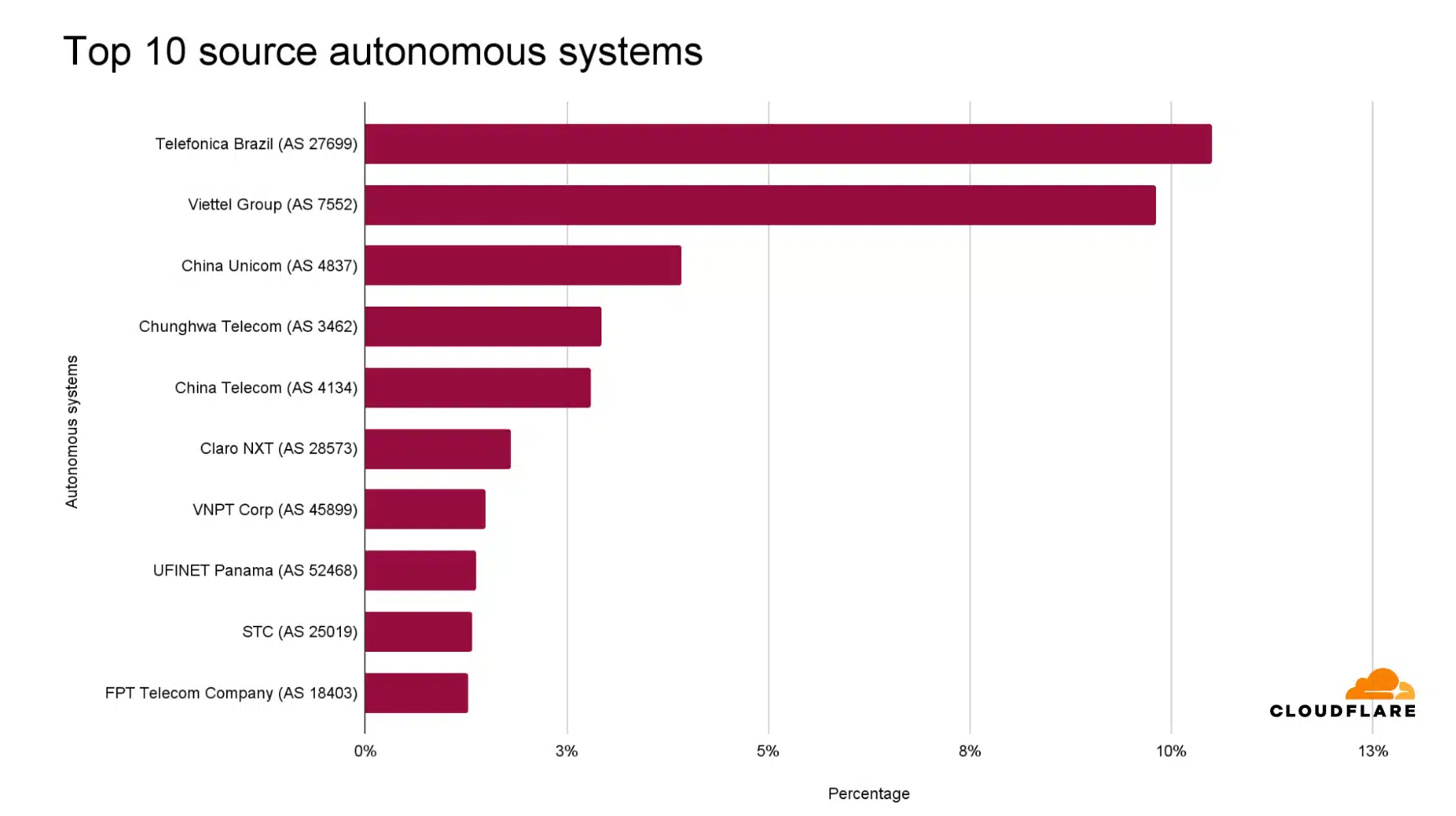
- Instant detection via eBPF programs analyzing packets in real time
- Fingerprint generation to identify malicious patterns
- Automatic blocking without any human intervention
- Information sharing across the 477 data centers involved

The most impressive part? No alert was triggered, no incident reported. The systems digested this gigantic attack as if it were a simple tap on the shoulder.
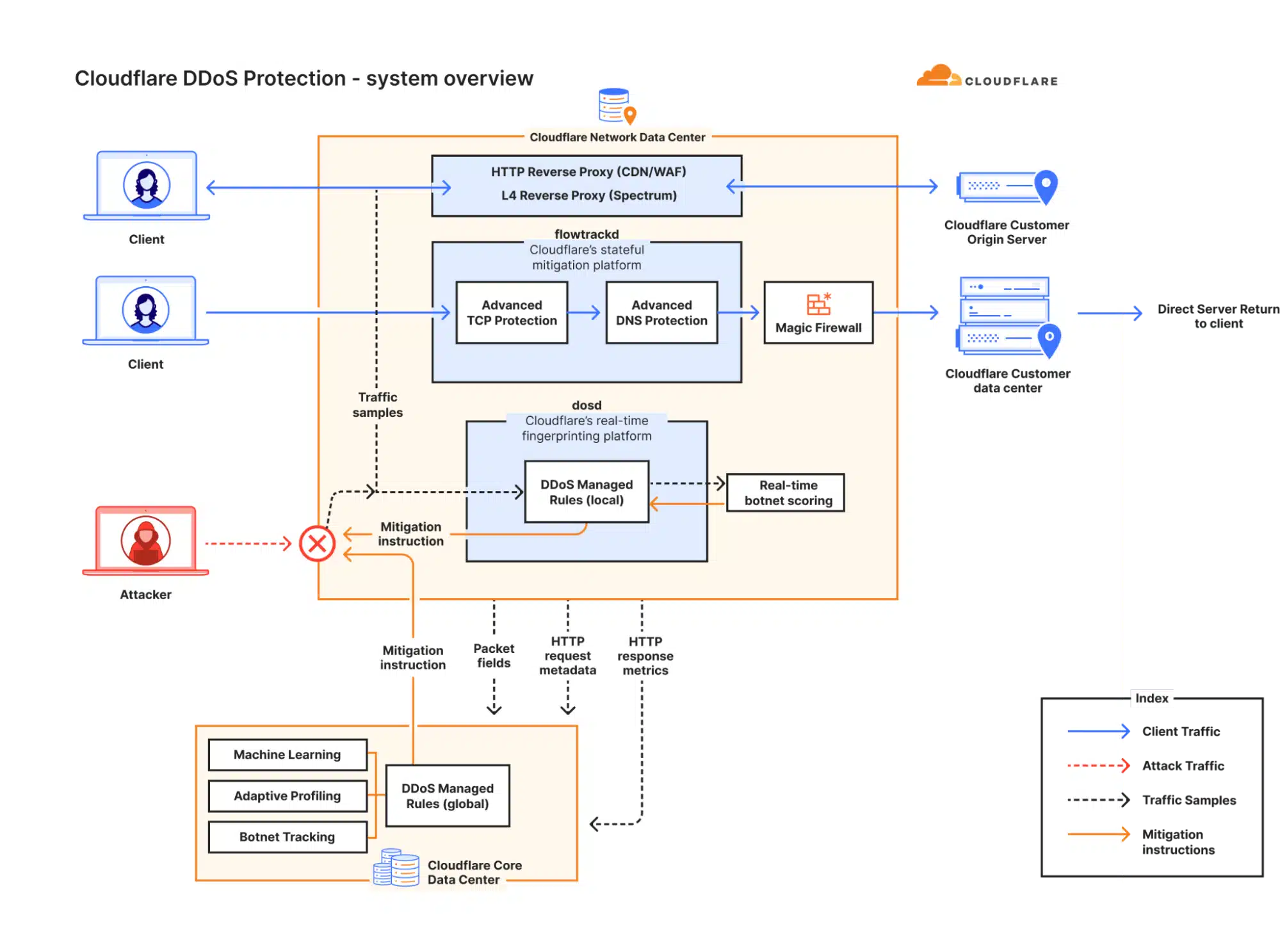
David Slays Goliath
This technical feat reminds us how Internet sometimes hangs by a thread. Without the robust infrastructures of companies like Cloudflare, an attack of this scale could have caused colossal damage:
- Paralysis of major websites
- Disruption of communications
- Economic impact measured in millions of euros
- Ripple effects on connected services
Cloudflare’s Anycast architecture allowed automatic distribution of this malicious load across 293 global points of presence, turning a concentrated attack into a dispersed gust.
Lessons from an Invisible Battle
This record attack raises several crucial questions for the digital ecosystem :
For businesses : DDoS protection is no longer a luxury but an absolute necessity. Attackers are now prioritizing hosting providers and critical infrastructures.
For access providers : It is urgent to secure connected devices and monitor suspicious outbound traffic. Many compromised IoT devices participate in these attacks without their owners realizing it.
For system administrators : Disabling old protocols (QOTD, Echo, RIPv1) and updating network configurations can prevent becoming an inadvertent amplifier of the attack.
Towards a More Resilient Internet
This technological victory hides a troubling reality: DDoS attacks are growing in power and sophistication. The previous record of 6.5 Tbps was smashed in just a few months.
Fortunately, defenses are evolving as well. Cloudflare even offers a free feed of information on botnets to service providers, enabling them to identify and neutralize attack sources. More than 600 global companies already use this collaborative tool.
The Silent War Continues
While we browse our favorite sites, a silent war rages in the web’s shadows. This 7.3 Tbps attack is probably only a foretaste of what lies ahead.
But it also proves that human ingenuity and technology can triumph over destructive forces. Thanks to autonomous systems capable of reacting in milliseconds, the Internet remains the remarkable space of freedom and innovation that we cherish.
The next time you watch a streaming video or send a message, think of these digital guardians who watch 24/7 to keep the show going, away from the spotlights and the public, but essential to our connected life.

